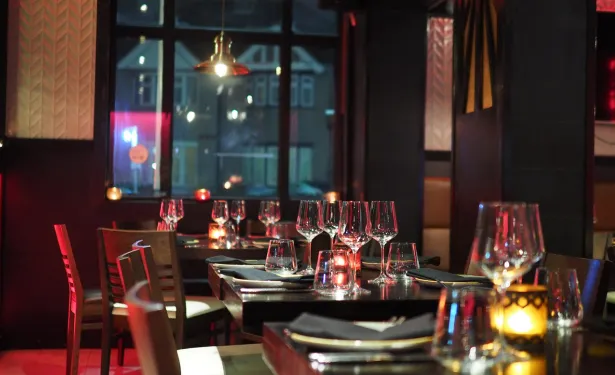The decline of F&B's "one size fits all" model
- Nov. 12, 2023
- FMCG HORECA BUSINESS

The CEO and co-founder of Grubtech, tech entrepreneur Mohamed Al Fayed, feels that the F&B textbooks have been altered. He goes into more detail about the move away from conventional F&B methods in this piece, highlighting how ephemeral food trends are in today's hectic society.
The level of food literacy has never been higher. Consumers now have more sophisticated tastes and are more conscious about their health and well-being. The F&B business is changing its processes to meet the demands of busier patrons and greater standards.
Transition to Extreme Personalization
Online food delivery services have brought about a movement toward hyper-personalization while simultaneously helping small businesses and providing customized dining experiences. To drive profitability, F&B firms need to adjust to the desire for individualized solutions in order to satisfy customers and win their loyalty.
Hyper-personalization is helping companies stand out from the competition even in a crowded market by giving them useful data into their target audience and enabling them to hone their marketing tactics. Furthermore, hyper-personalization helps them create cutting-edge, novel must-have products. With less resources needed, generative AI solutions are similar to hyper-personalization on steroids. Now that customers may express their wants, the genie grants them.
Figures
The value of the worldwide generative AI market as of 2023 was USD 13.71 billion. It will make up 10% of all data created by 2025. By 2030, the generative AI market is projected to grow to a value of USD 110.8 billion. There will be no exceptions in the F&B sector.
Through the integration of LLMs and mar-tech (marketing technology), companies may now access a plethora of new opportunities and interact with clients in a highly customized and efficient way.
Four successful F&B tactics
Four practical tactics can be used to enable hyper-personalized experiences.
Cultural sensitivity
For a deeper connection, businesses stand to gain from adopting local culture and matching offerings with customer preferences and traditions. Understanding local cultures so enables customized meal selections based on personal preferences and culinary legacy. AI is able to adjust to this particular gastronomic preference by recommending culturally appropriate and highly similar options. For example, in Saudi Arabia and other Islamic nations, halal food is a need.
adherence to regional legislation
Businesses may make sure their menu selections meet the unique criteria and laws of the communities they serve by keeping up with local laws and regulations. The AI needs to be programmed to adhere to national holidays, tax laws in some unique countries, and other laws and regulations that can have an impact on the hyper-personalization that AI can provide.
Modification of language
Personalized experiences are largely dependent on effective communication. F&B establishments need to make the effort to learn the languages that their patrons speak. Therefore, LLMs need to incorporate different dialects and idioms that individuals use in everyday discussions in order to create a personalized relationship. Speaking to robots with natural language will revolutionize communication, improve interactions, and allow for hyper-personalized experiences. Natural language processing has the ability to facilitate more efficient communication and customized interactions.
Sense of trend
Businesses need to keep up with the most recent developments in the sector if they want to stay relevant and satisfy changing client expectations. Consequently, companies can use AI to customize their product offerings. AI is able to adjust to different diets by generating customized menus according to your tastes, allergies, and eating patterns, which improves the selection of foods.
Concluding remarks
There are conflicting opinions about robotics in restaurant kitchens that work as wait staff and prepare food, suggesting that the culinary scene may be shifting.
With the development of AI, restaurants can now provide distinctive, customized experiences. As a result, static menus are obsolete because AI can now adjust to individual client preferences, ensuring a special eating experience for every patron.
The future of the food and beverage sector certainly holds unheard-of levels of innovation and customer delight.



